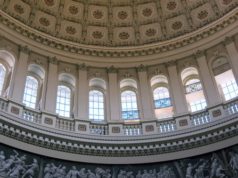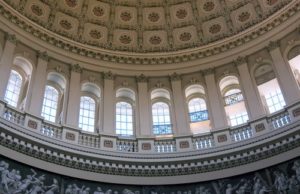In recent months, administrative courts across various jurisdictions have delivered a series of rulings that have not only challenged established norms but have also illuminated the often-overlooked complexities of administrative law. These decisions, which may have seemed obscure at first glance, have far-reaching implications for public policy, governance, and the very fabric of justice and fairness. As these courts unveil the unseen layers of legal interpretation and administrative accountability, it becomes imperative to understand their role and the factors influencing their decisions.
Understanding the Role of Administrative Courts in Upholding Justice and Fairness
Administrative courts serve a critical function in the legal system, acting as arbiters between individuals and government agencies. Their primary role is to ensure that administrative actions comply with the law and that citizens receive fair treatment in their interactions with the state. By reviewing decisions made by government bodies, administrative courts uphold principles of justice and accountability, providing a necessary check on the exercise of executive power. These courts address a wide range of issues, from regulatory compliance to the protection of individual rights, thereby reinforcing the rule of law and promoting transparency in governance.
An Overview of Recent Administrative Court Rulings That Challenge Conventional Wisdom
Recent rulings from administrative courts have sparked significant debate and scrutiny, particularly as they challenge long-held assumptions about the limits of governmental authority. For instance, several courts have ruled against agencies that sought to impose regulations without adequate justification or public input, emphasizing the necessity of transparency and accountability in administrative processes. These decisions have not only overturned previous precedents but have also encouraged a more participatory approach to governance, compelling agencies to engage with stakeholders and consider the broader implications of their policies. As a result, these rulings have reshaped the landscape of administrative law, prompting a reevaluation of the balance between regulatory authority and individual rights.
Key Factors Influencing Administrative Court Decisions: A Closer Examination
The decision-making process within administrative courts is influenced by a myriad of factors, including legal precedent, statutory interpretation, and the socio-political context in which cases arise. Judges often weigh the intentions of lawmakers against the practical implications of administrative actions, considering how decisions will affect not only the parties involved but also the public at large. Additionally, the increasing public scrutiny of government actions, fueled by social media and heightened civic engagement, has led courts to adopt a more cautious approach in their rulings. This evolving landscape necessitates that judges remain attuned to the shifting dynamics of public opinion and the potential consequences of their decisions on governance and policy-making.
Case Studies: Landmark Rulings That Have Shaken the Legal Landscape
Several landmark cases have emerged from administrative courts that exemplify the transformative nature of recent rulings. One notable case involved a government agency’s attempt to implement a controversial environmental regulation without conducting a comprehensive impact assessment. The court ruled in favor of environmental advocacy groups, asserting that the agency’s failure to consider public input and potential consequences constituted a violation of procedural fairness. Another significant ruling addressed the rights of workers in gig economy platforms, where the court mandated that these platforms provide benefits typically reserved for traditional employees. Such cases not only reflect the courts’ commitment to upholding justice but also highlight the evolving relationship between law, society, and technology.
The Implications of Administrative Court Rulings on Public Policy and Governance
The implications of administrative court rulings extend far beyond individual cases; they have the potential to reshape public policy and governance frameworks. By reinforcing the principles of accountability and transparency, these rulings compel government agencies to reconsider their approaches to regulation and public engagement. As courts increasingly assert the importance of citizen participation in administrative processes, policymakers may be driven to adopt more inclusive practices that prioritize stakeholder input. Furthermore, these decisions can serve as catalysts for legislative reform, prompting lawmakers to revisit existing statutes and ensure they align with contemporary societal values and expectations.
Moving Forward: The Future of Administrative Law in Light of Recent Developments
As administrative courts continue to unveil the unseen complexities of governance, the future of administrative law appears poised for significant evolution. The recent trend of rulings that prioritize transparency, accountability, and public participation suggests a shift towards a more dynamic and responsive legal framework. Legal scholars and practitioners must remain vigilant in tracking these developments, as they may signal a broader transformation in how administrative law is interpreted and applied. Moreover, as societal expectations evolve, administrative courts will likely face increasing pressure to adapt their rulings to reflect contemporary values, ensuring that justice and fairness remain at the forefront of administrative governance.
The recent administrative court rulings have exposed critical issues surrounding governmental authority and individual rights, prompting a reevaluation of established norms within administrative law. As these courts continue to navigate the complexities of justice and fairness, their decisions will undoubtedly shape the future of public policy and governance. By fostering a culture of accountability and transparency, administrative courts not only uphold the rule of law but also empower citizens to engage meaningfully with their government. As we move forward, the legal community and the public alike must remain attentive to these developments, recognizing their profound implications for the fabric of democracy and the pursuit of justice.

































